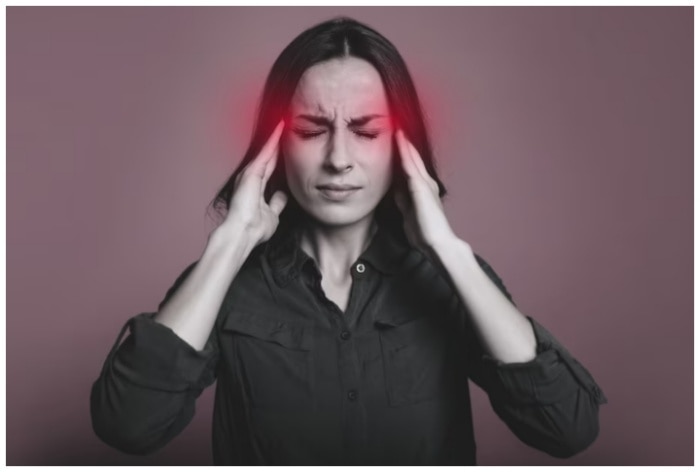Throbbing headache can sometimes disrupt our normal life functioning. Expert speaks on what may trigger migraine and how to mitigate the pain.
DOCTOR VERIFIED
Migraine is a perplexing neurological condition, that has puzzled medical experts for years. Driven by a variety of factors, this ailment expresses itself as intense, throbbing pain, often accompanied by additional symptoms like nausea or vomiting. The pain initiates as a normal slight headache and transforms into an intense agonizing pain moving from one portion of your head to the other. It can take place in the frontal portion of your head or engulf your entire head region.
India.com got in touch with expert who explained all about the triggers, types and ways to manage migraine pain. As per Dr Vivek Loomba, Senior Consultant Pain Physician at the Indian Spinal Injuries Center, New Delhi, while the root cause remains unidentifiable, there’s a prevailing theory that overactive nerve cells trigger the release of neurotransmitters, including serotonin and CGRP(calcitonin gene-related peptides), leading to inflammation and pain in the inner walls of the brain.
Types of Migraine
Migraine, in its countless forms, presents a complex spectrum of symptoms:
- Classic Migraine: Accompanied by aura, classic migraines exhibit sensory, speech, or visual disturbances, along with brainstem symptoms such as vertigo, tinnitus, dysarthria and eye problems.
- Common Migraine: Striking without aura, common migraines make individuals sensitive to light and sound, often localized to one side of the head.
- Menstrual Migraine: Linked to menstrual cycles, these migraines coincide with periods, adding an additional layer of complexity.
- Vestibular Migraine: The indications include nausea, vomiting, and vertigo. It may or may not be accompanied by a headache.
- Silent Migraine: Presenting aura symptoms without the typical headache, silent migraines offer a unique index.
- Abdominal Migraine: It results in nausea, vomiting, and stomach discomfort. Eventually, it may turn into a classic migraine headache.
- Hemiplegic Migraine: Characterized by temporary paralysis, weakness, dizziness, and vision issues on one side of the body.
- Ophthalmic Migraine: Involving partial or total vision loss, ophthalmic migraines are associated with a dull ache behind the eyes that may eventually spread to the rest of your head.
- Status Migrainosus: Marked by intense pain and nausea lasting over 72 hours, requiring medical attention.
- Ophthalmoplegic Migraine: Combining eye pain with paralysis of surrounding muscles, droopy eyelid, double vision, or other vision issues.
Migraine Triggers
- Bright Light
- Dehydration
- Hormonal Changes in women
- Stress
- Loud Sounds
- Physical Activity
- Sleep Pattern Changes
- Certain Medications
- Specific Foods
- Weather Fluctuations
- Smoking
- Alcohol and Caffeine
- Traveling
- Barometric Pressure Changes
Identifying these triggers becomes crucial in managing and preventing migraine attacks.
Strategies for Migraine Relief
While a definitive cure remains elusive, several treatment options can help manage migraine symptoms. Lifestyle changes- Identifying triggers and making lifestyle adjustments can significantly reduce the frequency of migraines. Dr.Vivek Loomba emphasizes the importance of “nerve blocks or radiofrequency ablation” as effective treatments for migraine headaches. According to him, some patients have experienced complete recovery after these interventions. He suggests consulting an experienced pain physician for a thorough assessment and appropriate interventions.
- Holistic Approaches: Behavioral and lifestyle changes, such as stress management, cognitive-behavioral therapy, and alternative therapies like acupuncture and chiropractic treatment, play a crucial role in easing migraine symptoms.
- Home Remedies: Simple practices like staying hydrated, resting in a calm environment, and applying cold compresses to the forehead can provide relief.
- Mind-Body Practices: Combining meditation, yoga and breathing exercises can provide holistic relief.
- Hydration: Adequate fluid intake contributes to overall health and can impact migraine frequency.
- Restful Sleep: Prioritizing regular and sufficient sleep can contribute significantly towards migraine management.
- Regular Exercise: Engaging in moderate physical activity supports overall well-being and may contribute to reducing migraine occurrences.
- Stress Management: Developing effective stress-coping mechanisms is essential for migraine sufferers.
In conclusion, while the complexities of migraines persist, a multi-faceted approach involving medical, lifestyle, and holistic strategies offers a widespread roadmap for managing and alleviating the impact of this complex neurological condition.

